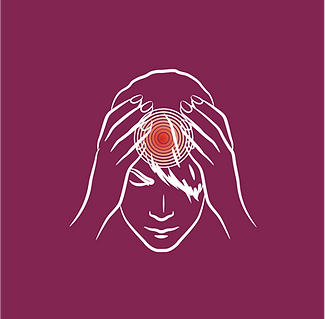Inflammations, menstrual pain,
migraines
dental pain
Diclofenac K, or diclofenac potassium, is a form of diclofenac that is often used for its fast-acting pain relief.
It belongs to a class of medicines known as non-steroidal anti-inflammatory drugs (NSAIDs), which are used to treat pain and inflammation.
Form and use
Diclofenac K powder for drinking solution is designed to be dissolved in water and drunk, which may allow faster absorption compared to solid forms such as tablets. This formulation is particularly useful for people who have difficulty swallowing pills.
Indications
It is generally prescribed for the treatment of various types of acute pain, such as muscle pain, dental pain, migraines, dysmenorrhoea (menstrual pain) or pain following surgery. It can also be used to treat the symptoms of arthritis, such as inflammation and pain.
Dosage
The dosage of diclofenac K may vary depending on the patient's age, the severity of the pain and other medical factors. It is important to follow the dosage prescribed by a healthcare professional, not to exceed the recommended dose and to read the package leaflet carefully.
Precautions
As with all NSAIDs, diclofenac K can cause side effects, including gastrointestinal disorders such as ulcers or bleeding, kidney problems and allergic reactions. It is contraindicated in people with a history of severe gastrointestinal disorders, heart disease or kidney disease.
It is crucial to consult a healthcare professional before starting treatment to ensure that diclofenac is appropriate for your condition and to discuss any potential interactions with other medicines you may be taking.
Interactions
Diclofenac may interact with other medicines and increase the risk of side effects, in particular with certain anticoagulants, other NSAIDs and blood pressure medication.
If you are considering using diclofenac K powder for oral solution, it is recommended that you do so under the supervision of a healthcare professional to minimise risks and ensure effective pain management.
Conclusions
Rhumalgan K powder is an OTC medicine sold in pharmacies in the form of a powder for oral solution.
Rhumalgan K powder works quickly.
It should not be used in children under 18 years of age without the advice of a doctor.
Please follow the instructions in the leaflet carefully and/or seek advice from a health professional.
Dysmenorrhea
by Elisabetta Bocci
12.05.2024

Generalities
Dysmenorrhea, more commonly known as menstrual pain, is pelvic pain that occurs before or during a woman's menstrual period. They can vary in intensity from mild to severe, and are one of the most common gynecological conditions.
Origines
Dysmenorrhoea is generally classified into two types:
-
Primary dysmenorrhea:
-
This refers to pain that is not associated with another disease. Pain often starts with the first menstrual period and may improve with age or after pregnancy.
-
The cause is often linked to the production of prostaglandins, substances that cause uterine contraction and expulsion of the uterine lining, and can lead to pain.
-
-
Secondary dysmenorrhea :
-
It is associated with gynecological disorders such as endometriosis, uterine fibroids, adenomyosis, pelvic infections or congenital malformations.
-
These conditions can cause inflammation, scarring or obstructions that exacerbate pain during menstruation.
-
Problems
Dysmenorrhea can seriously affect women's quality of life, leading to problems such as :
-
Inability to participate in normal daily activities
-
Absenteeism from school or work
-
Associated symptoms such as nausea, headaches, fatigue and digestive disorders
-
Emotional and psychological impact, including stress and anxiety
Treatments
The treatment of dysmenorrhoea varies according to its type and severity:
-
Treatments for primary dysmenorrhea :
-
Non-steroidal anti-inflammatory drugs (NSAIDs): These drugs, such as ibuprofen or naproxen, help reduce the production of prostaglandins and relieve pain.
-
Hormonal contraceptives: Hormone-releasing contraceptive pills, patches, vaginal rings or intrauterine devices can reduce the frequency and severity of pain by suppressing ovulation.
-
Complementary therapies: Some women find relief with methods such as yoga, acupuncture, heat applications and dietary changes.
-
-
Treatments for secondary dysmenorrhea :
-
Treatment of the underlying condition: For example, surgery may be required for endometriosis or fibroids.
-
Pain management: In addition to NSAIDs, stronger analgesics or specific therapies may be required.
-
Conclusions
It is important for any woman suffering from severe or persistent dysmenorrhoea to consult a healthcare professional for a proper diagnosis and treatment plan.





